The McLaren F1 isn’t just another supercar. It’s the kind of machine you dream about—born from a wild, almost reckless ambition to build the world’s ultimate road car.
When Gordon Murray and his small but mighty McLaren crew set out in the early ‘90s, they weren’t just aiming high—they wanted to break the sky. They took every ounce of Formula 1 know-how and poured it into a three-seat rocket, with the driver right in the center of the action.
But the F1 isn’t just about numbers or engineering flexes. Its story is about obsession—Murray and his team chased perfection with a kind of fever you rarely see outside of art or music.
They built the F1 out of carbon fiber before it was cool, dropped in a naturally aspirated BMW V12 that sounds like an orchestra on fire, and obsessed over every detail for the sake of pure driving joy.
The F1 didn’t just influence supercars—it rewrote the playbook. Owners and fans still treat it like a holy relic, and you can feel its DNA in every modern hypercar that dares to chase its legacy.
Origins and Development of the McLaren F1
Gordon Murray’s vision for the ultimate road car started brewing in the late 1980s. His years in Formula 1 shaped every single decision, from the dead-center driver’s seat to the featherweight carbon chassis.
Vision Behind the F1 Project
Murray, deep in his McLaren days, dreamed up the F1 because he just wanted the best road car. No compromises, no marketing fluff—just raw, unfiltered performance.
He aimed for a car that would be lighter, faster, and more advanced than anything else out there. The F1’s story really kicked off in the late ‘80s when Murray started pouring his racing brain into road car magic.
McLaren gave him a blank check and didn’t let the marketing folks anywhere near the project. Murray ran wild with creative freedom, and you can see it in every bolt and curve.
Key Project Goals:
- Top speed over 200 mph
- Weight under 1,000 kg
- Naturally aspirated engine
- Three-seat configuration
- Advanced aerodynamics
Inspiration and Influences
Formula 1 wasn’t just an influence—it was the blueprint. Murray took the central driver’s seat from race cars, convinced it would deliver the ultimate driving feel and balance.
The three-seat layout? Totally bonkers for a road car back then. But Murray wanted the driver to be the sun in the F1’s universe, with passengers orbiting just behind.
Carbon fiber was still exotic in the ‘80s, but Murray’s F1 experience gave McLaren a head start. That monocoque chassis? Straight out of racing, and way ahead of its time.
He picked BMW’s naturally aspirated V12 because he wanted power that came on smooth and strong, like an F1 car. The BMW partnership brought a little German precision to the British madness.
Debut Moment and Public Reception
The McLaren F1 strutted onto the world stage at the 1992 Monaco Grand Prix. Talk about making an entrance—right alongside McLaren’s F1 team, no less.
People didn’t know what to make of it at first. The price tag—£540,000—was pure sticker shock. But journalists? They got it right away, calling it a supercar from another planet.
Media Response Highlights:
- Autocar: “the ultimate supercar”
- Road & Track: praised the engineering excellence
- Motor Trend: highlighted the innovative design
Fast forward to its 30th anniversary in 2022, and the F1’s legend only burns brighter. The world finally caught up to what McLaren was doing all those years ago.
Behind-the-Scenes Stories
Building the F1 took five years—five years of headaches, breakthroughs, and probably more than a few sleepless nights. The team ran into technical problems that demanded wild, creative solutions.
Murray wouldn’t settle for anything but the best. He lined the engine bay with gold (yes, real gold) for heat reflection, and the titanium toolkit alone cost more than some new cars today. Overkill? Maybe. But it’s just so McLaren.
Notable Development Details:
- Over 1,000 hours of wind tunnel testing
- Custom Michelin tires made just for the F1
- Each car took about 3.5 months to build—by hand
The BMW engine deal almost fell apart—twice. BMW’s engineers doubted the project at first, but Murray’s stubbornness (and detailed specs) finally won them over.
They only built 106 cars for buyers and racing teams. Each one was hand-crafted, which explains the sky-high price and why every F1 feels like a bespoke work of art.
Design and Engineering Leadership
Building the McLaren F1 took a wild mix of vision, stubbornness, and pure engineering grit. Gordon Murray led the charge, but the whole crew brought their A-game, solving problems that would make most engineers sweat.
Key Designers and Technical Directors
Professor Gordon Murray called the shots as chief designer. Before McLaren, he’d already made waves at Brabham F1, dreaming up radical race cars that bent the rules and sometimes broke them.
His Formula 1 background gave him a sixth sense for weight-saving tricks and aerodynamics. He didn’t just want the F1 to be fast—he wanted it to be a featherweight with a punch.
The team, working under Murray, came up with that legendary three-seat layout. It’s a little oddball, a little genius, and totally unforgettable.
Murray tried out a bunch of engines before falling for the BMW V12. His choices shaped the F1’s soul—no question about it.
Engineering Challenges and Solutions
Making a carbon fiber monocoque strong and light wasn’t easy. The team had to invent new ways to build it, pushing the limits of what was possible back then.
Every single part got scrutinized for weight. If it wasn’t absolutely needed, it got tossed. If it could be lighter, it got reworked. The obsession with weight bordered on madness—in the best way.
Cooling the BMW V12 in such a tight space was a nightmare. The engineers came up with clever airflow tricks to keep things from melting down.
They spent countless hours in wind tunnels, tweaking the aerodynamics. The F1 even had active aero that adjusted on the fly—ahead of its time, really.
Notable Team Members and Contributions
Neil Houldey, the chief engineer, was Murray’s right-hand man. He tackled some of the nastiest technical challenges and kept the project moving forward.
BMW Motorsport’s experts brought the V12 to life, making sure it was both bulletproof and a total fire-breather. Their engine became the F1’s beating heart.
Peter Stevens, working under Murray, shaped the F1’s look. He managed to make it functional and drop-dead gorgeous at the same time.
Ray Mallock’s team dialed in the suspension and handling. Thanks to them, the F1 didn’t just go fast in a straight line—it danced through corners.
Engine and Performance Innovations
Let’s talk about that BMW V12. It’s not just powerful—it’s a work of art. When you rev it, the sound is pure mechanical symphony. Honestly, it’s one of the best-sounding engines ever built. Goosebumps, every time.
The F1’s aerodynamics and tech set new standards. It blended Formula 1 wizardry with road car practicality, creating a blueprint that others still chase.
Engine Partnerships and Specifications
BMW built the S70/2 V12 just for the F1. It’s a 6.1-liter naturally aspirated monster, making 627 horsepower and 479 lb-ft of torque—without a turbo in sight.
They used magnesium for the crankcase and aluminum for the heads, shaving weight wherever they could. The engine’s variable valve timing helped it sing all the way to a 7,500 rpm redline.
Key Engine Specifications:
- Displacement: 6.1 liters (6,064 cc)
- Configuration: 60-degree V12
- Power: 627 hp at 7,400 rpm
- Torque: 479 lb-ft at 4,000 rpm
- Redline: 7,500 rpm
The BMW-McLaren partnership was a perfect storm of German precision and British boldness. BMW’s motorsport chops made the engine both reliable and wild.
The BMW V12 wasn’t just wild in terms of speed but also in how it sounds,take a listen
Performance Benchmarks and Lap Records
Here’s where things get spicy. In 1998, the F1 hit 240.1 mph. That wasn’t just a record—it was a gauntlet thrown at the feet of the entire industry.
And get this: it took seven years for another production car to beat that top speed. The Bugatti Veyron finally managed it in 2005, but that was with four turbos and all-wheel drive. The F1 did it with a single, naturally aspirated V12 and rear-wheel drive. That’s just wild.
Acceleration? The F1 rockets to 60 mph in 3.2 seconds and 100 mph in just 6.7. Quarter-mile? It’ll do it in 11.1 seconds. Supercar numbers, even today.
Performance Metrics:
- 0-60 mph: 3.2 seconds
- 0-100 mph: 6.7 seconds
- Quarter-mile: 11.1 seconds
- Top speed: 240.1 mph
Braking’s just as impressive—brembo brakes (not ceramic) haul it down from 60 mph in 107 feet. The F1 doesn’t just go fast, it stops and turns like it’s reading your mind.
Powertrain Technology and Integration
The F1’s six-speed manual connects you straight to the BMW V12. No electronic nannies, no filters—just you, the machine, and the open road. It’s a rare, visceral experience you won’t find in most modern supercars.
McLaren’s F1 team runs high-tech hybrid engines these days, but the road-going F1 kept it old-school—just pure combustion fury.
The carbon fiber monocoque weighs a featherlight 220 pounds, letting that V12 sling the car’s 2,509-pound body down the road with a power-to-weight ratio of 550 hp per ton. That’s why it feels so alive.
Weight Distribution:
- Engine: 586 pounds (265 kg)
- Transmission: 119 pounds (54kg)
- Total vehicle: 2,513 pounds (1,140 kg)
That insane power-to-weight ratio? It’s the secret sauce behind the F1’s legendary performance.
Exterior, Interior, and Aerodynamic Advancements
The F1’s design isn’t just functional—it’s art in motion. The three-seat cockpit, carbon fiber everywhere, and that slippery shape all serve a purpose, but they also make the car look like it’s breaking the sound barrier just standing still.
Exterior Styling and Iconic Features
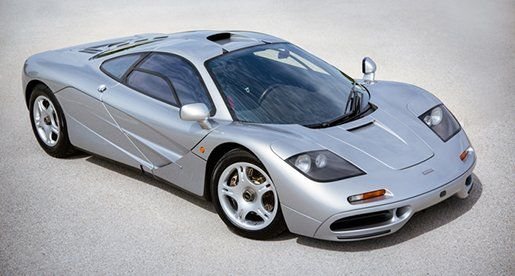
Peter Stevens designed the McLaren F1 with a look that’s both purposeful and clean. There’s something almost effortless about its low-slung profile and those silky curves that just slice through the air.
But let’s be honest—the dihedral doors steal the show. They swing up and out like a pair of wings, giving the car this wild, theatrical vibe and making you feel like you’re stepping into a spaceship, not just a car.
Key Exterior Elements:
- Carbon fiber body panels—super strong, feather-light
- Air intakes tucked behind the doors, feeding that glorious V12
- Retractable headlights that keep the nose clean and sleek
- Central exhaust outlet with two smaller pipes flanking it
The F1’s proportions just work. The long hood hides the V12, while the short rear overhang keeps the weight right where it should be.
McLaren even lined the engine bay with gold foil—not just for show, but to bounce heat away from vital parts. It’s functional, but also looks totally unique. That’s the kind of detail you just don’t see anymore.
Aerodynamics and Bodywork

Gordon Murray wanted the F1 to feel pure, so he skipped big wings and spoilers. Instead, the car hugs the ground using ground effect—think race car tech, but for the road.
The underbody is as flat as a pancake, with channels that guide air just right. It’s like the car is glued to the tarmac, pulled down by invisible hands at speed.
Aerodynamic Features:
- Smooth underbody panels for slick airflow
- Front splitter to push the nose down
- Rear diffuser that manages how air escapes
- Side intakes for cooling—because that engine gets hot
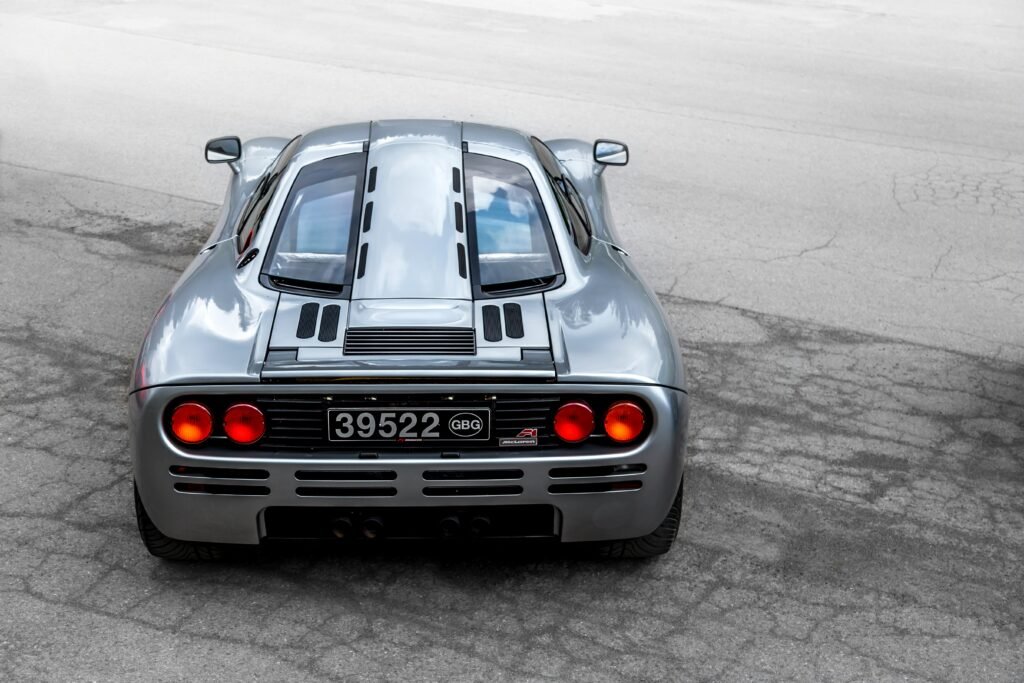
The McLaren team obsessed over efficiency. They spent ages in the wind tunnel, tweaking every line and curve.
Instead of loading up on extra bits, the F1’s shape does all the heavy lifting. It’s almost poetic—form and function, in perfect harmony.
Cockpit and Driver-Centric Design
Inside, it’s all about the driver. You sit smack in the middle, with your buddies slightly behind you on either side. It’s a bit like piloting a jet—total command, full visibility.
The cockpit is stripped down to the essentials. Carbon fiber everywhere, making everything feel light and technical, but never cold or sterile.
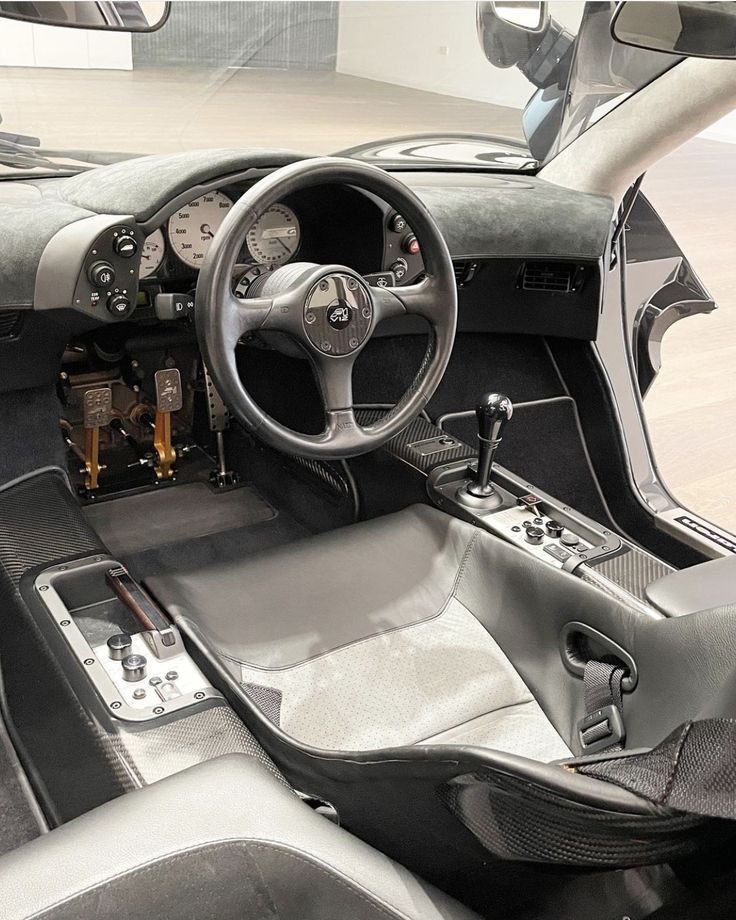
Interior Specifications:
- Alcantara everywhere—seats, steering wheel, all the touch points
- Titanium pedals—light, tough, and just a bit showy
- Carbon fiber dash with only the gauges you really need
- Bespoke Kenwood audio—because why not have great tunes?
The driving position? Spot on. The wheel feels tiny and light, buzzing with feedback from the road.
Storage is tight, but who cares? There’s just enough space for the essentials—wallet, phone, maybe a set of gloves if you’re feeling fancy.
The seats don’t move. Instead, you adjust the wheel and pedals. It’s a little quirky, but honestly, it makes you feel like the car was made just for you.

Driving Experience and Community Insights
The McLaren F1 isn’t just fast—it’s an experience. Every drive feels like an event, thanks to engineering that’s as precise as it is passionate. No wonder there’s a cult of owners and fans who treat this car like a rolling piece of art.
Professional Road Tests and Media Reviews
Journalists can’t get enough of the F1. They rave about the unique center seat—it’s almost like you merge with the car, feeling every nuance of the road.
Road & Track pointed out that parallel parking is a pain—being in the middle makes it tough to judge curbs. But hey, if that’s the price for perfection, I’ll take it.
Testers love the car’s featherweight build and razor-sharp handling. The BMW V12 delivers its power so smoothly, you almost forget how much punch it’s packing—until you floor it, and the world blurs.
Key Performance Highlights:
- 0-60 mph: 3.2 seconds—still wild, even today
- Top Speed: 240.1 mph (held the record for over a decade!) Still to this day, the fastest naturally aspirated car.
- Weight: Just 2,513 pounds—lighter than most modern hatchbacks
Magazines everywhere crowned it the greatest supercar ever. It set the bar so high that it took more than a decade—over 11 years, in fact—before the Bugatti Veyron finally beat its top speed. That’s an eternity in car years.
And the sound? Oh, the sound. That V12 wails and howls—raw, mechanical, almost operatic. It’s the kind of noise that makes your heart skip a beat. If you’ve never heard it in person, you’re missing out on one of life’s great automotive symphonies.
Owner Impressions and Driving Culture
Owners talk about the F1 like it’s a religious experience. The center seat makes you feel like a racing driver, even if you’re just heading to the shops.
That naturally aspirated V12? It’s instant, no turbo lag, just pure response. You feel every pulse, every vibration—like the car’s alive under your hands.
Common Owner Feedback:
- Build quality that borders on obsessive
- Intimidating at first, but once you get it, nothing else compares
- Demands respect—this isn’t a car you take lightly
- You could daily it, but it’s a challenge (and maybe a bit mad)
No fancy driver aids here—just you, a manual gearbox, and the road. It’s the last of a dying breed, the final word in analog supercars before computers took over.
Owner Demographics and Global Community
The F1’s owners? Let’s just say they’re not your average car buyers. We’re talking collectors, racers, industry insiders—people who live and breathe cars.
Many have roots in motorsport. Even some Formula 1 legends have owned one, drawn in by the F1’s racing DNA.
Typical Owner Profile:
- Net worth? High—think $100 million and up
- Garages packed with other supercars
- Serious racing fans and pros
- Tech entrepreneurs and business moguls
The F1 community is tiny but fiercely loyal. They meet up at secretive events and rallies, swapping stories and soaking up the car’s legend.
Most of these cars live in the US, UK, or Japan. Those places have the most active F1 scenes—if you’re lucky, you might catch a glimpse at a high-end meet.
Notable Quotes and Media Perspectives
Gordon Murray, the mastermind behind it all, once said: “I wanted to create the ultimate road car – no compromises, just pure performance and driver engagement.” Mission accomplished, right?
Reviewers get poetic—one said, “the McLaren F1 doesn’t just transport you from point A to point B – it transforms the entire concept of what a car can be.” Hard to argue with that.
Key Industry Perspectives:
- “The F1 represents the absolute pinnacle of automotive engineering” – pretty much every car magazine ever
- “It’s not just fast – it’s perfectly balanced” – pro test drivers
- “The central driving position changes everything about how you experience speed” – owners, all day long
The F1’s reputation as the ultimate still shapes how supercars are built. That center seat, that obsessive focus on weight—it’s the stuff of legend.
Journalists keep coming back to the F1 because it redefined what a car could do. It proved you could have mind-bending speed and still drive to dinner in comfort. Not many cars can say that.
Legacy, Variants, and Market Influence
The McLaren F1 didn’t just set records—it changed the game. With only 106 built, it’s become the holy grail for collectors, auctioning for over $20 million. Every company chasing the hypercar dream owes something to this machine.
Variants and Special Editions
Between 1992 and 1998, McLaren made just 106 F1s. Of those, 64 were road cars—the ones you’d spot (if you’re lucky) at a car show.
F1 LM (Long tail Mans)—only five of these unicorns exist. They’re lighter, wilder, and built for the track.
F1 GT—just three made, basically a street-legal race car with that stretched bodywork.
The F1 GTR was the real racer—28 built, each tweaked for battle on track.
Every version commands a different kind of obsession. Check out the F1’s production story if you want to tumble down the rabbit hole of chassis numbers and collector trivia.
Awards and Racing Achievements
Le Mans, 1995—McLaren’s first try, and they win outright. Not just that, they took third, fourth, and fifth too, beating the best from Ferrari and the rest. That’s the stuff of legend.
Major Racing Wins:
- Le Mans 24 Hours (1995) – overall victory
- BPR Global GT Series (1995, 1996) – championship titles
- Suzuka 1000km (1995) – class win
Car magazines showered the F1 with Car of the Year awards. Motor Trend, Road & Track—they all fell over themselves to praise its engineering and performance.
That Le Mans win? It changed everything for McLaren, putting them in the same breath as Ferrari, both on track and on the road. Their racing heritage owes a ton to the F1’s victories.
Impact on Supercar Brands and Motorsport
Ferrari saw what McLaren was doing and fired back with the F50, then the Enzo. Suddenly, carbon fiber and race tech were everywhere.
Industry Changes:
- Carbon monocoques became the norm
- Everyone started thinking about central driving positions
- Naturally aspirated V12s got a new lease on life
McLaren’s approach even inspired companies like Red Bull to jump into car building. Lightweight, aerodynamic, focused—those became the buzzwords for a new era.
The F1 didn’t just raise the bar—it created a whole new category: the hypercar. Its tech innovations forced everyone else to catch up, and honestly, some are still trying.
Price Trajectory and Collectable Value
Back in 1994, the original F1 rolled out with a sticker price of $815,000. That number seemed astronomical at the time, but honestly, it looks like a bargain now.
For a while, prices just kind of hovered there through the early 2000s. Nothing too wild—until, suddenly, things took off.
Price Milestones:
- 2008: $3-4 million average—yeah, that escalated fast
- 2015: $10-12 million range
- 2019: $15-20 million for pristine examples
- 2024: $20+ million for exceptional variants
The F1 LM variant? That’s the unicorn. It smashed records, with one selling for over $19 million at RM Sotheby’s in 2019. It’s wild to think about that kind of money for a car, but if you’ve ever heard one of these things at full throttle, you’d get it—honestly, it’s breathtaking, like an orchestra of thunder and silk.
Let’s be real: the F1’s market climb left Ferrari classics and basically every other collectible car in its dust. Not even the legends could keep up. It took decades—almost 15 years, give or take—for other supercars to even threaten its price dominance. That’s a lifetime in the car world!
Low production numbers, McLaren’s racing pedigree, and that intoxicating V12 soundtrack? It’s a recipe for obsession. No wonder collector demand just keeps climbing.
Now, insurance companies treat F1s like investment-grade assets. I mean, can you blame them? The value feels almost bulletproof, which makes it a magnet for serious collectors and dreamers alike. If you’re lucky enough to own one, you’re not just driving a car—you’re holding onto a piece of rolling art.
Final Words
33 Years later, and the McLaren F1 is still the pinnacle of supercars and true automotive engineering. Its existence wasn’t about going fast rather to rewrite the meaning of what it means to build a supercar that not only beats other cars around the track but also history and the stock market.
Thanks for reading! If you enjoyed this deep dive, be sure to subscribe to my email list for exclusive car reviews, insider tips, and weekly special offers on car parts, auctions, and gear — perfect for any car enthusiast.
If you have any thoughts or experiences with this car? Leave a comment below — I love hearing your opinions and sparking conversations with fellow enthusiasts.
And don’t forget to read related posts for more great content!

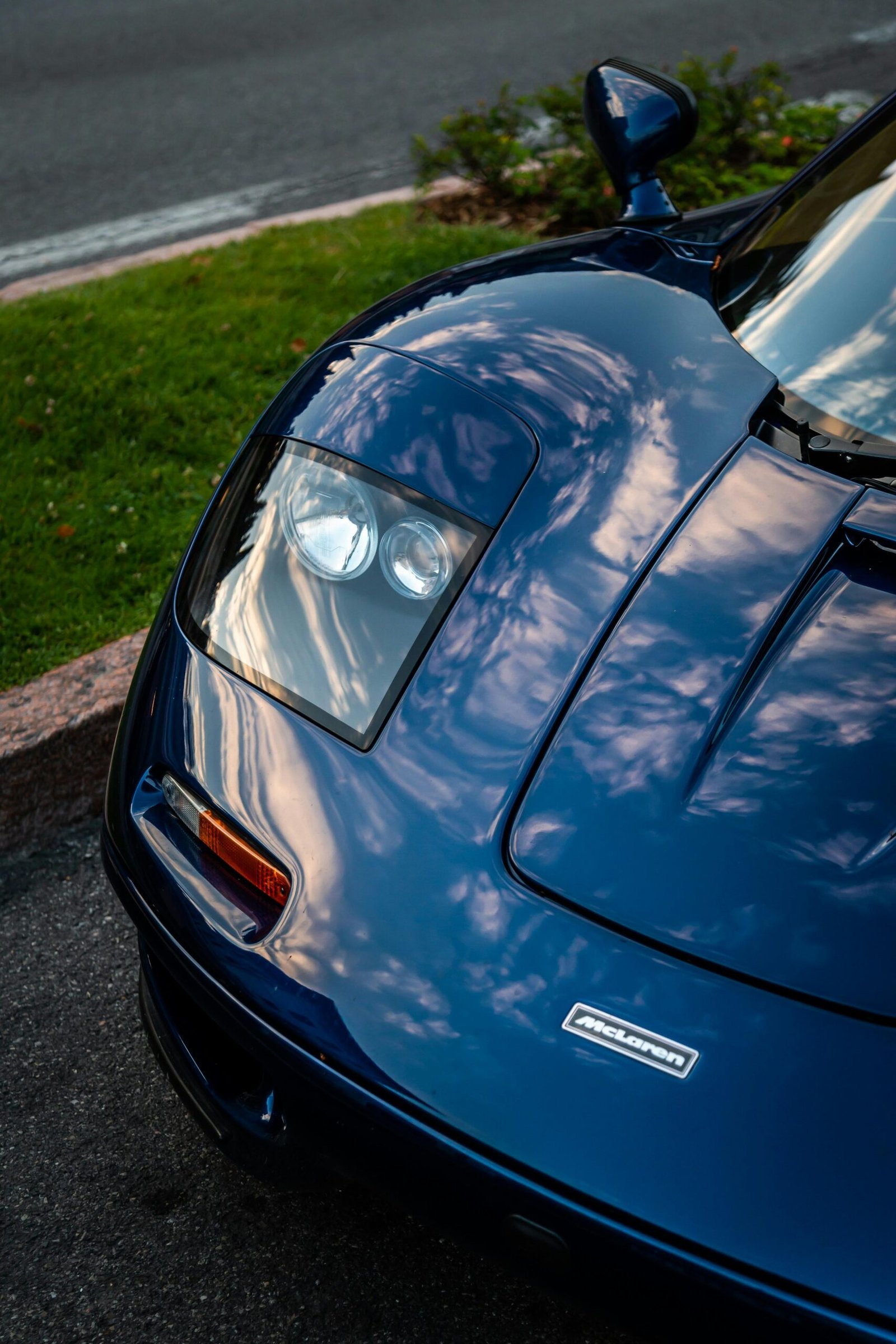


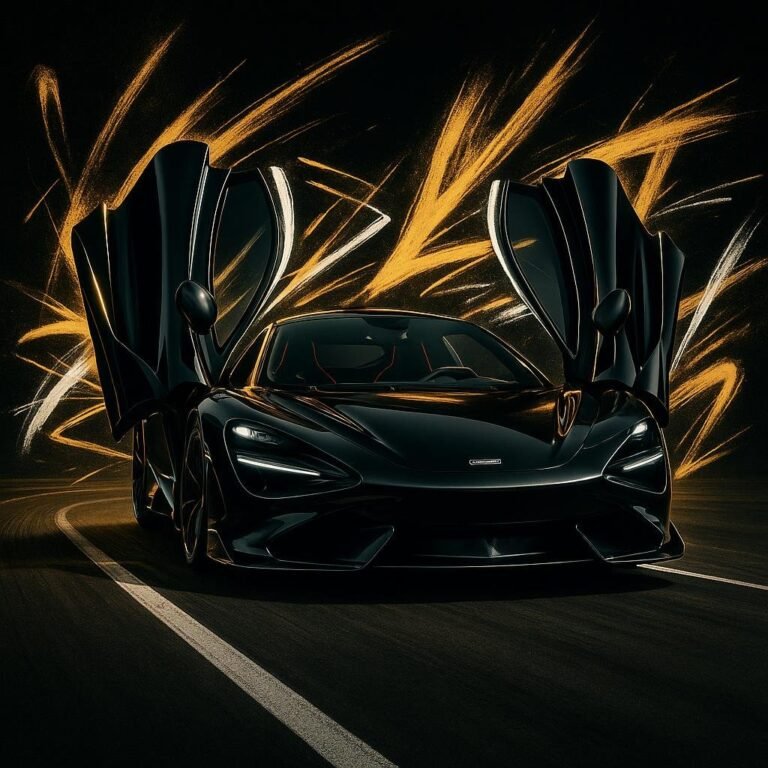
[…] Senna is the third act in McLaren’s Ultimate Series, following the F1 and P1. Their main goal? Faster laps, lighter body, and smarter […]
[…] get real—some VIN stories are legendary. They’re the secret ingredient for supercar authentication, and the stakes are […]
[…] someone mentions supercars and speed, Ferrari usually pops up as the gold standard. But, honestly, car history is full of […]
[…] studied the McLaren F1 GTR and Porsche 911 GT1 closely. They aimed for something faster, stronger, and more intimidating […]
[…] Zonda C12 made its big entrance at the 1999 Geneva Motor Show. Horacio Pagani’s first production vehicleflipped the script on what a supercar could be. The carbon fiber body alone was enough to make even […]
[…] talk about legends—the McLaren F1 is a unicorn among unicorns. With just 106 ever built, it’s the kind of car that makes […]
[…] three-door Range Rover got plenty of love at its debut. People raved about its bold design and the sheer […]
[…] history of McLaren Longtail philosophy. Its roots? They reach all the way back to the iconic F1 GTR race car that shook up the […]